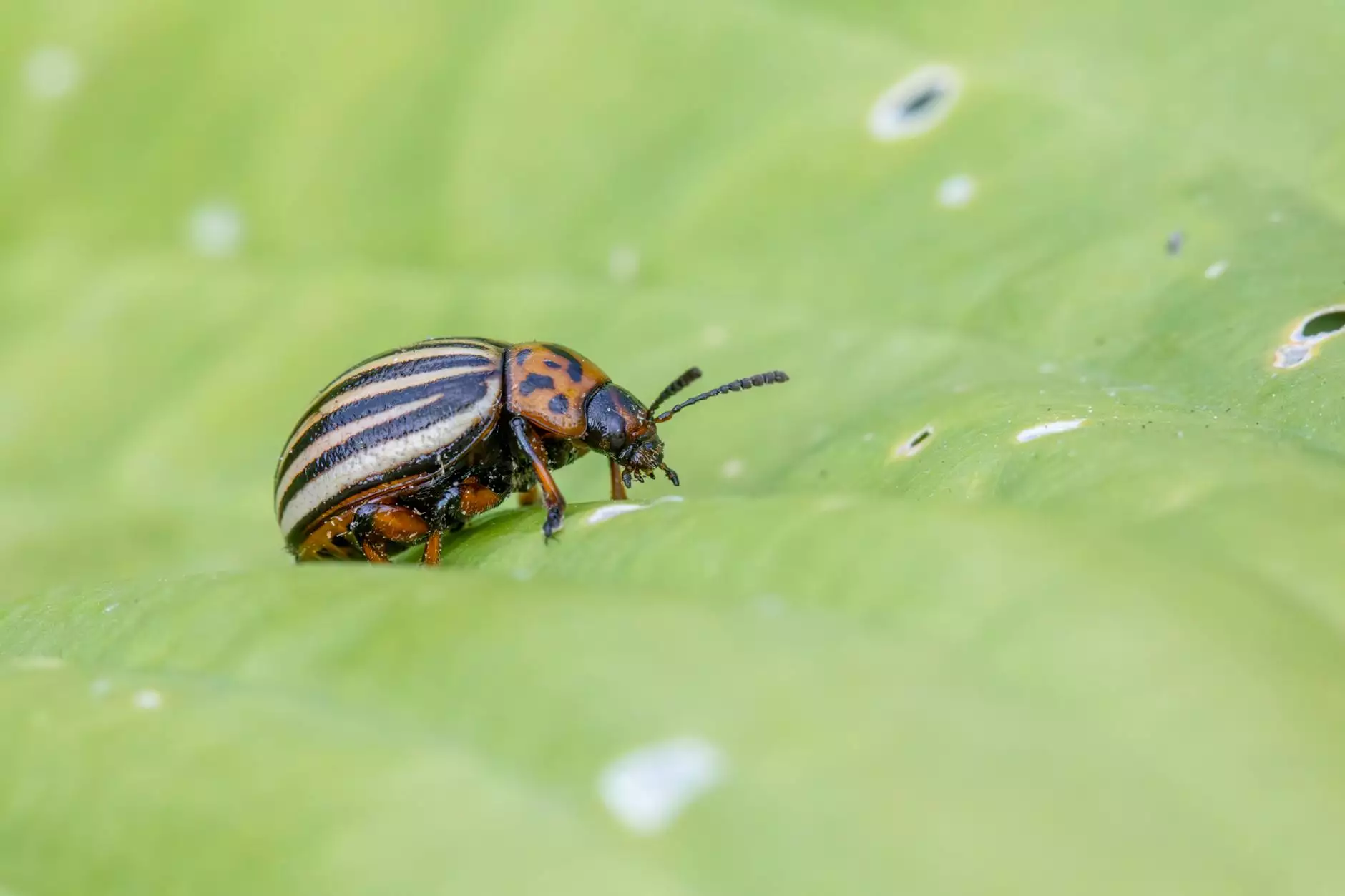Effective Grain Storage Insect Control Techniques

Grain storage insect control is a crucial aspect of maintaining the quality and safety of harvested crops. Insects pose a significant threat to grain in storage, leading to economic losses and food safety concerns. This comprehensive guide delves into effective strategies for controlling insects in grain storage facilities, ensuring that your grains remain pest-free.
Understanding the Importance of Grain Storage Insect Control
Proper grain storage is vital for farmers and grain handlers alike. Insects can cause damage not only through consumption but also by contaminating the grain with their droppings and body parts. Hence, effective grain storage insect control measures must be implemented to preserve the integrity of the grain.
Why Insect Control is Essential
- Prevention of Economic Loss: The financial implications of insect damage can be significant, with losses potentially reaching millions annually.
- Food Safety: Insect infestations can lead to contaminated products, posing health risks to consumers.
- Preservation of Quality: Insects can affect the taste, smell, and texture of grains, impacting their marketability.
Common Insects Affecting Stored Grains
Understanding the types of insects that typically infest stored grains can aid in implementing effective control measures. Here are some common pests:
- Rice Weevil: Small and brown, these pests are known to infest various grains, particularly rice and wheat.
- Flour Beetles: There are two species, the confused flour beetle and the red flour beetle, which thrive in flour and whole grains.
- Indian Meal Moth: This moth is notorious for infesting stored grains, especially in warm locations.
- Grain Mites: These tiny pests can thrive in damp grain environments, leading to rapid infestations.
Effective Strategies for Grain Storage Insect Control
It is essential to adopt a multi-faceted approach to grain storage insect control. Here are some proven strategies:
1. Maintain Proper Grain Storage Conditions
Insects thrive in favorable conditions. By managing temperature and humidity levels, you can significantly reduce the risk of infestations:
- Temperature Control: Keeping stored grains at a temperature below 60°F can inhibit insect activity. Systems can be installed to monitor and manage temperature fluctuations.
- Humidity Management: The ideal moisture content for most grains is below 14%. Use moisture meters regularly to keep grain moisture levels in check.
2. Implementing Regular Inspections
Frequent inspections of storage facilities and grain products can help in early detection of infestations:
- Visual Inspections: Inspect grains thoroughly for signs of insect activity such as webbing or larvae.
- Trap Systems: Use pheromone traps to capture and monitor pest populations. This helps in understanding the pest's lifecycle and planning interventions.
3. Utilizing Natural Control Methods
Incorporating natural pest control methods into your grain storage strategy reduces reliance on chemical interventions:
- Neem Oil: Derived from the neem tree, this oil disrupts the life cycle of various insects when applied to grains.
- Essential Oils: Certain essential oils, such as peppermint and clove, can deter pests when diffused or sprayed in storage areas.
4. Chemical Control Measures
While natural methods are effective, sometimes chemical control is necessary. Always prioritize safety and efficacy:
- Insecticides: Use targeted insecticides that are effective against specific pests without harming non-target species.
- Fumigation: Consider fumigation for large-scale infestations. This process should always be conducted by trained professionals.
5. Proper Cleaning and Sanitation
Regular cleaning and maintenance of storage facilities play a pivotal role in pest prevention:
- Cleaning Practices: Remove spills and old grains that can attract pests. Empty bins should be cleaned before new grain is stored.
- Seal Storage Areas: Ensure that storage structures are airtight to prevent insect entry.
The Role of Technology in Grain Storage Insect Control
Modern technology has transformed how we approach grain storage and pest management:
- Automated Monitoring Systems: These systems can track temperature and humidity levels around the clock, providing real-time data to prevent infestations.
- Drone Technology: Drones can be utilized for large-scale agricultural operations to inspect storage facilities and fields for pest activity.
Conclusion
Grain storage insect control is not merely a reactive measure; it is a proactive necessity for preserving the quality and safety of harvested grains. By understanding the threats posed by insects and implementing rigorous control strategies, farmers and grain handlers can protect their yield, ensuring a sustainable and profitable operation. Remember that an integrated approach—combining mechanical, biological, and chemical strategies—is often the most effective way to combat these persistent pests.
Investing the time and resources into these control measures can yield significant benefits in the long run. Regularly update your pest control practices according to the latest research and technological advancements in the field to stay ahead of potential infestations.
For further information or assistance with grain storage insect control, contact us at tsgcinc.com. We are dedicated to providing expert advice and services to enhance your farming practices.



